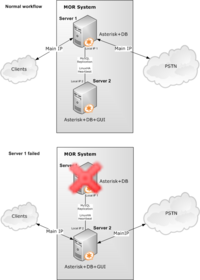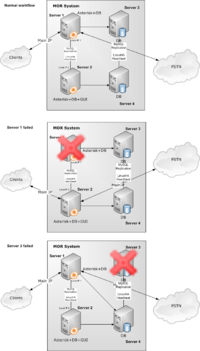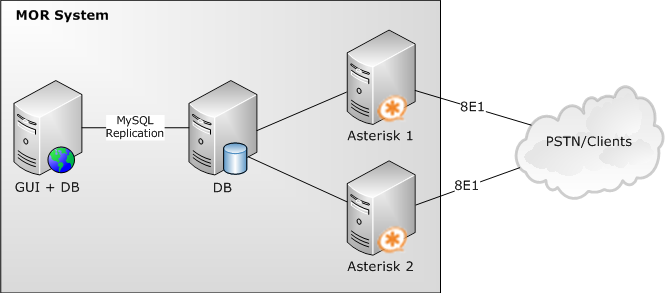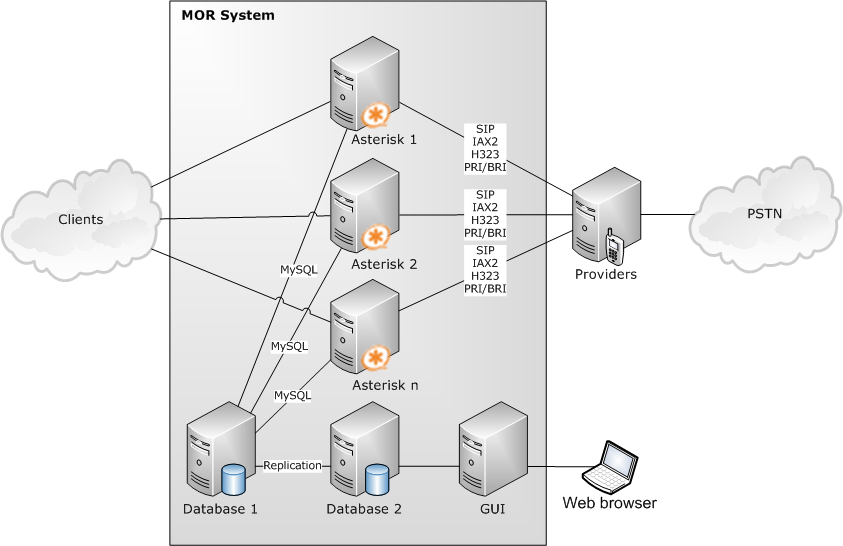Difference between revisions of "Implementations"
From Kolmisoft Wiki
Jump to navigationJump to search
| Line 26: | Line 26: | ||
<br> | <br> | ||
==[[Image:ita.jpg]] 4 server solution in Italy with 16 E1== | ==[[Image:ita.jpg]] 4 server solution in Italy with 16 E1== | ||
Revision as of 12:43, 1 April 2011
This page shows some ways how MOR billing system can be used. Examples are from real implementations.
2 server redundant solution
 This is most popular solution because it is fully redundant and most stable.
This is most popular solution because it is fully redundant and most stable.
More info: 2 server redundant solution
4 server redundant solution
 Stable and redundant solution for high performance.
Stable and redundant solution for high performance.
More info: 4 server redundant solution
 4 server solution in Italy with 16 E1
4 server solution in Italy with 16 E1
- Such system is in Italy serving Call Shops
- E1 hardware is 2 x Sangoma A108DE cards
- This implementation is used for high volume calls to/from PSTN network over 16 E1 links were 4+4 E1 is for incoming and 4+4 E1 is for outgoing (on Asterisk 1 server 4 incoming/4 outgoing and same on server Asterisk 2).
- Separate server is dedicated to database which minimizes load on Asterisk servers.
- GUI is on separate server with it's own DB connected to main DB server over MySQL Replication.


